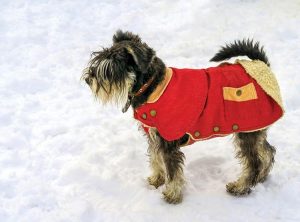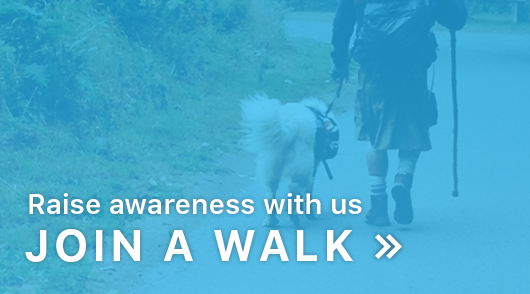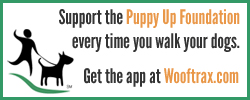
Ontario Police Department Ordinance Officer Dallas Brockett says when temperatures dip a lack of adequate shelter for pets is a common problem. While some breeds of dogs with longer hair can fare well in the winter, others cannot, and may suffer frostbite and hypothermia, he says.
Lack of adequate shelter a winter concern
Griffin Hewitt The Argus Observer
ONTARIO — Pets need their human counterparts to keep a close eye on them during the winter months. The Argus recently asked Code Enforcement Officer Dallas Brockett to share his insights into what can be done to better protect those furry friends.
Following is a question-and-answer with him.
Argus: What is the biggest issue you see with pets and cold temperatures?
Brockett: Like any animals, the biggest issue we see in colder temperatures is lack of adequate shelter.
ORS 167.325 states:
A person commits the crime of animal neglect in the second degree if, except as otherwise authorized by law, the person intentionally, knowingly, recklessly or with criminal negligence:
(a) Fails to provide minimum care for an animal in such person’s custody or control; or
(b) Tethers a domestic animal in the person’s custody or control and the tethering results in physical injury to the domestic animal.
“Minimum Care” is defined in the ORS as:
(9) “Minimum care” means care sufficient to preserve the health and well-being of an animal and, except for emergencies or circumstances beyond the reasonable control of the owner, includes, but is not limited to, the following requirements:
(a) Food of sufficient quantity and quality to allow for normal growth or maintenance of body weight.
(b) Open or adequate access to potable water in sufficient quantity to satisfy the animal’s needs. Access to snow or ice is not adequate access to potable water.
(c) For a domestic animal other than a dog engaged in herding or protecting livestock, access to adequate shelter.
(d) Veterinary care deemed necessary by a reasonably prudent person to relieve distress from injury, neglect or disease.
(e) For a domestic animal, continuous access to an area:
(A) With adequate space for exercise necessary for the health of the animal;
(B) With air temperature suitable for the animal; and
(C) Kept reasonably clean and free from excess waste or other contaminants that could affect the animal’s health.
Argus: Are there more reports of animal neglect during this time of year?
Brockett: The most reports of animal neglect / animal abuse is in the summer time; mostly people leaving their dogs in hot cars while they go shopping. 58 reported cases of animal neglect for this year. The cold winter times are still an issue; this is usually with improper shelter/warmth for the animal, or an animal left outside all night.
Argus: What are some steps pet owners can take to keep their companion animals safe?
Brockett: Just like any animals, companion animals need to be on a leash. Per our city municipal code 6.2.6 – Dog Running at Large :
It shall be unlawful for a dog to run at large. It shall also be unlawful for the dog to be on elementary or secondary school properties, City parks, golf courses or other municipally owned property except on an adequate leash.
It is unlawful for any owner, possessor, or person who keeps any dog, to permit the same to be, remain, or run at large off or away from the premises of the owner, possessor or keeper thereof, unless:
(A) Upon the private premises of another with the prior consent of the person in possession of such premises; or
(B) Such dog be controlled by a leash, not to exceed six feet (6’) in length which shall be securely fastened to a collar or harness worn by the dog; provided, that such dog is not allowed in any case to enter without prior permission upon the private property of another; and provided, such dog is not permitted to cause damage to any public property; or
(C) Such dog is confined in a motor vehicle.
Dogs are safer if they are on a leash; dogs need to be controlled by their owner so they don’t risk causing a motor vehicle accident or getting hit by a vehicle. If they are controlled by the owner, they are also receiving proper care and not have the chance of wandering off and not finding their way home.
Argus: Is it a benefit to dogs to wear shoes when it’s snowy or icy?
Brockett: Certain breeds of dogs that have longer hair or that are use to winter weather (Huskys for example), may not need the shoes or boots for their paws. Just like humans however, Dogs can get frost bite, and hypothermia. Limit your walks for your dogs in colder weather. Also be sure to check around and under your vehicle during the winter months before starting it. These act as shelters for stray animals and could cause serious injury or death if an animal gets stuck inside a vehicle when it is turned on. Be sure to wipe down the dogs feet after the walk — as the ice melts, deicers, and other chemicals can cause damage to a dog’s feet.
Argus: What other kinds of issues do you see around this time of year regarding companion animals?
Brockett: With companion animals, I see less issues than with normal dogs/dog owners. I believe a companion animal may be a higher value to that person, however it shouldn’t be. We should treat every animal like it is ours, and they are part of our family. They don’t have a voice to speak, so we are their voice and they rely on us for their proper care and safety.
Brockett concluded with the following reminder to the community.
“Get your dogs registered with the city! And have them wear the tag! This helps me find the dog’s owner if someone comes across them.”
From Argus Observer








